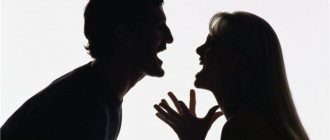Causes
The most common reason is habit. A person twirls his hair at a moment of thoughtfulness, awareness of some problem, or prolonged reflection. This simple action helps you concentrate on your thoughts and stop reacting to external stimuli.
Other reasons are presented below.
- The desire to calm down. The sensation of twisting your hair is reminiscent of a soothing pat on the head or a relaxing massage. That's why children of preschool and primary school age can use this relaxation method. Sometimes it’s easier to cope with separation from your mother.
- Fall asleep faster. The baby plays with his hair when he falls asleep. Gradually he falls asleep without the help of his parents. Usually this bad habit is eradicated with age.
- The desire to escape from your problems. As a child gets older, the number of stressful situations increases. The habit of touching hair develops into a compulsive action. A vicious circle is formed: he gets a little nervous - he twirls his hair - he realizes that this is bad - he gets nervous.
- Another reason is a feeling of defenselessness. Being very frightened, the baby decides to pull his hair. He thinks that this will make the situation safer and help get rid of obsessive fear.
- It happens that he begins to pull not only his own hair, but also other people’s. This is how a child often hurts his mother without even realizing it. Sometimes he uses his fingernails, literally tearing out entire clumps of hair. And there is only one explanation for this - he is scared and wants his parent to protect him from everyone.
Symptoms
The compulsive action is so important that the inability to perform it is perceived as a threat to life. The need to constantly pull your hair occurs in stressful situations and is repeated. This may also be a reaction to chronic stress that the child cannot eliminate from his life (parental quarrels, peer bullying, problems at school).
If an uncontrollable action is interrupted, the child will do his best to look for a way to complete it: he will begin to twirl his hair a certain number of times or in some sequence. The baby will do this until he calms down completely.
Consequences
Any neurosis that is not diagnosed and treated in a timely manner significantly harms the child. The psyche at this age (preschool and primary school) is still fully formed, and the nervous system is unstable.
A lot of physical and mental energy is spent on compulsive action and thoughts about it. As a result, obsessive curling of curls in children can lead to the following consequences:
- decreased capabilities of all cognitive processes (memory, attention, thinking);
- the child gets tired quickly and is unable to concentrate on lessons;
- sleep disorders, nightmares;
- lack of contact with other children (he does not play, does not make friends with them, because they can tease him);
- general isolation, lack of contact with adults.
Hair follicles suffer from constant tension. As a result, the hair breaks, becomes dry, lifeless and falls out. In damaged areas, curls may not grow back well for the rest of your life.
The worst thing is if the baby starts pulling out hair on his head.
This occurs when a child begins to twirl their hair around their thumb. This habit can eventually develop into trichotillomania. This is a type of auto-aggression when, in order to calm down, a person pulls out individual hairs or even tufts of hair on the body. In neglected situations, bald patches form. In such a situation it is no longer possible to cope without the help of a psychiatrist.
Wash your hair often with deep cleansing shampoo
Deep cleaning shampoos are a special purpose product that is used no more than twice a month. If your hair quickly becomes oily at the roots and you need to wash your hair daily, do not choose a too aggressive clarifying shampoo, otherwise you will only achieve the opposite effect: the scalp will produce oil even more intensely, but at the same time it will be dehydrated, and the strands themselves will become weakened and thinned .
Use mild shampoos with a neutral pH level for daily washing. Use deep cleaning shampoo as needed: once or twice a month.
Posted 04/19/2017 Hello! My daughter (almost 5 years old) has recently started crying often because she regrets things. For example, he asks not to throw away the shells of painted Easter eggs - “I like them so much.” Or because of spilled water - “will you pour me the same amount as there was?” Asks to save all kinds of candy labels. Moreover, if I tell her that I will save them, she immediately forgets about them and stops crying. In addition, he refuses to go to kindergarten, saying that he misses me a lot there. Although before that it was quite normal to go there. Tell me what could be causing this disorder. I also started twirling my hair on my finger.
Self-medication
Helping a child or even an adult on your own is possible. Especially if a girl or teenager suffers from this bad habit.
Some of the simplest but most effective methods are:
- creating beautiful hairstyles;
- braiding;
- beautiful hair curling;
- gentle and neat styling;
- short haircut (if it suits your face), etc.
The girl needs to be explained that pulling her hair is an indicator of her excitement and worry. That this does not always look attractive, and characterizes a person as nervous. It is necessary to delicately and very carefully explain to her that such similar actions make her image one-sided and demonstrate her as a complex, insecure person.
Some doctors advise patients to take up handicrafts. Hands will always be busy, and a person will have no time for curling curls. If the activity is really exciting, then getting rid of the problem will be easy.
Help for children
Having noticed signs of abnormal behavior in time, parents can help the child themselves. The nature of the actions depends on the age of the baby.
Children under 3 years old
There is no need to hit their hands when they twirl their hair. This will worsen the relationship between the baby and parents, but will not help eliminate the bad habit. In books on child psychology they write: if mom and dad focus on the child’s problematic behavior, he may deliberately commit provocative actions.
Recommendations:
- Find a hair replacement. Give your child a toy to distract him.
- Develop your child's fine motor skills - put together puzzles, play with cereal, make buildings from cubes. Then the hair will become an uninteresting object for the baby.
- Give your child a hand massage. Gently stroke each finger and head. It is important to give him the pleasant sensations that he gets from twirling his hair on his fingers.
- Communicate more with your child. The less often he sees his mother, the more often he will try to twirl his hair.
- Before bedtime, play soothing music for your baby, read fairy tales or sing lullabies. If this is a baby, you can turn on white noise. Don't forget to kiss your baby before bed.
- If all else fails, you can take an extreme measure - cut your baby's hair short. You can put your hair in a ponytail or wear a thin hat. The main thing is the baby’s lack of access to hair.
Children 4-6 years old
For preschoolers, the process of curling their hair is no longer a soothing aid. This is a way to protect yourself or an opportunity to check your own safety. More common among girls. This is due to the fact that they have long hair.
Ways to solve the problem:
- Talk to your child. Pay attention at what moments the girl twirls her strands around her finger. Is she in a good mood or experiencing anger, aggression, stress? Help her feel confident. Create a feeling of security. You can tell an incident from your life: how worried you were before your first performance, reading a poem in class, after receiving a comment from a stranger. The example of parents inspires children and helps them assert themselves.
- Explain to your child the essence of the problem. Tell us why you think this behavior is bad and unacceptable. Tell him that after this action, the hair deteriorates and looks ugly and unkempt. Be warned that some strands may become tangled as a result of twisting. This will make combing difficult. The main thing is not to yell at the child. Talk to him like an adult.
- Use the signal. Together with your daughter, come up with a signal or gesture indicating that you need to remove your hands from your curls.
Be sure to praise your child if he makes progress. Focus on the good. You can use small rewards: sweets or extending the cartoon viewing for 15-30 minutes. This motivates the child.
Children 7-13 years old
At this age, it is important not to lose the child’s trust. To do this, talk to him more often, let him understand that you value his individuality. It is important that mom and dad compliment their daughter. It is important for a girl to know that she is beautiful and to feel the support of her parents.
Mom needs to learn how to do beautiful hairstyles - to become a personal hairdresser for her daughter. She should explain to her daughter that loose hair interferes with her studies and it is better to have a neat hairstyle. You can show beautiful hairstyles to women your age: you can find options with detailed instructions in magazines and on the Internet. Perm your hair and style your curls beautifully. Then the desire to twist your hair will disappear - no one will want to spoil a beautiful hairstyle.
If twirling her hair calms her down, offer her other ways to relieve stress. Explain that such an action will not help you concentrate, but will only distract you.
Children over 13 years old
In adolescence, twirling strands of hair around a finger can be a sign of flirting. In this way, girls attract the attention of the opposite sex and hide their shyness.
Such a habit may be copying the behavior of adults. The girl might find this attractive, and she began to act the same way. We need to explain to her that this is not the best solution.
Teach your girl how to take care of her hair. You can make hair masks together. For a child, you need extremely simple masks consisting only of natural ingredients. Serums, coconut oil or goat milk balms are often used.
Treatment options
The first step on the path to recovery is a consultation with a psychologist. It helps to find out the reasons for the development of such a habit. It will explain whether it is an addiction or just an alarming symptom.
If it's just a habit, a behavioral approach will do. In psychology, this is one of the methods of behavior management. You need to make sure that curling your hair leads to unpleasant consequences (not to punishment, but to not getting what you want). A short haircut helps, but only with the consent of the child.
If we are talking about compulsive actions or auto-aggression, you need to perform the following steps.
- Continue working with a psychologist until complete recovery or a significant reduction in the severity of symptoms.
- Drug treatment can be included.
- It is important to follow a daily routine. Do certain things on a clear schedule day after day (sleep, eat, walk). This routine is calming, because you know in advance what will happen and when. The nervous system receives a resource to overcome the disease.
Development occurs from a “point of rest,” that is, at a time when there are no shocks in life.
When curling your hair, there is no need to pull it back or make comments. This will push your child away from you and cause him to hide.
Calmly ask what is bothering the child. Try to discuss everything and show another way to calm down. The best thing to do is to hug him and tell him that he is the most wonderful and loved one.
Use your example to show how you can deal with anxiety, anger and irritation constructively. Not by swearing and screaming, but by expressing your emotions in the form of “I” messages. Phrases used in the process:
“I’m upset because...”; “I’m offended because...”; “I’m very glad, because...”, etc. Talk about feelings on your own behalf, meaning the baby’s experiences. The child must understand that he is not alone, he has support.
The most difficult thing in psychotherapy is to find out that parents themselves provoke the formation of stress. You need to be prepared for this, do everything in the interests of the family member.
During the period of therapy, there should be no scandals, major holidays, moves, or changes of schools in the family. Stress, both positive and negative, is detrimental in such situations.
Tamara (shpilki.net)
Lena Posted 04/19/2017 Hello, Lena. In children, curling hair on a finger is a primary sign of neurotic disorders that arise against the background of deprivation from the mother (in other words, separation and lack of maternal love) or as a defensive reaction of the child’s psyche to sudden changes (in the family, place of residence, etc.). This problem is not an aesthetic one, so you need to seek advice from a child psychologist. A specialist will be able to identify the causes of the problem and, using specially selected techniques, help your daughter cope with uncertainty and fears. Do not delay with therapy; it will be more difficult to treat during the school period.
Text Photo Ekaterina Posted 05/28/2015
If you want to thank, add clarification or objection to the author - add a comment!
What hair color should I choose? Please give me some advice. I don't know which one I have...
I had eyelash extensions for 6 months and took a break. After 3 months I increased it again...
Hi, can I dye my bleached hair (currently red) bright purple...
Hello! I am a dark girl with black eyes. I want to dye my hair dark...
The photo shows young beauties. Can older ladies have their eyebrows done? Age...
Cognitive behavioral therapy
This technique is effective in relation to both an adult and a child. The goal of cognitive behavioral therapy is to change the patient's negative attitude to a positive one. As a result, he should understand that he can calm down or get out of a state of stress without curling his hair.
At the beginning of the first session, the psychologist must find out the reasons for the development of OCD. To do this, he asks the client to share thoughts about the following:
- does he feel better from tugging at his curls?
- how he feels when he pulls his hair;
- does this action bring him pleasure, peace and tranquility;
- what will happen if he stops doing this;
- does he understand the consequences of this bad habit, etc.
In addition to an individual conversation, the patient must do homework. The speed of healing depends on the quality of their execution. They mean studying materials about the dangers of pulling hair: watching video lectures, reading specialized literature, communicating with trichologists.
The average duration of treatment is 5-6 sessions. They last 40-60 minutes and take place once a week. If the habit has already reached the stage of mental dependence, then the duration of the course can be 10 lessons.
Group therapy
This technique is not used with children, only with adults. The group usually consists of 10 people who are united either by common symptoms or by a common reason for the development of this bad habit.
All participants sit in a circle and begin to share their stories. This is the stage of acquaintance, the purpose of which is to position all patients towards each other in order to build constructive dialogues, because sometimes people with the habit of pulling their hair are antisocial.
Role-playing games may be carried out. The most popular is wish fulfillment if one of the patients starts doing these obsessive actions again.
Lectures are also provided during group classes. Their goal is to show a person that the habit of pulling one’s hair does not bring anything good, and it is better to get rid of it.
Group classes in various types of physical activity are possible: yoga, meditation, aerobics. The conversation participants also attend cultural events and communicate a lot with trichologists.
Art therapy
When communicating with children, such a conversation may not give the expected results, so it is easier to find out the causes and symptoms with the help of art therapy. She means depicting her problem using different types of art:
- drawing;
- theatrical action;
- singing;
- dancing;
- handicrafts, etc.
It is important to choose the activity that your baby loves most. Then he will not feel any tension when communicating with the doctor.
Visual art therapy is commonly used. The psychologist communicates with the baby, and he draws in the process. The doctor asks you to depict what is bothering him. There are no restrictions.
After this, the baby’s creation is evaluated. All lines, strokes, and ornaments are taken into account. Of particular importance is the color scheme, which makes it possible to assess the stage of the disease.
Next, the doctor asks the child to destroy his drawing in any way - tear it, trample it, wet it with water, etc. The main thing is to get rid of the image, and with it the problem.
What to do if you can’t do without touching your face
Sometimes it is not possible not to touch your lips, nose or eyes. In this case, use the following recommendations:
- Always keep tissues and wet wipes on hand. If you have an allergic runny nose, for example, you can wipe your nose with a clean handkerchief and then throw it away immediately.
- Don't forget to disinfect your hands. Keep antiseptic gel in your pocket or bag at all times. If you need to touch your face, thoroughly clean your hands with a special product (doctors recommend rubbing your palms and fingers for 30 seconds) and only then touch your eyes or lips.
- Develop new habits. If your chin is itchy, rub it on your collar. Itchy nose - scratch your nose with your sleeve. New habits will take time to develop, but once they stick, you will see the benefits for yourself.
Psychologists offer an interesting technique: if you are in a public place and cannot scratch your face with a clean napkin or wipe your hands with an antiseptic, try simply focusing on the unpleasant sensation. Watch how the itching changes in intensity and location, record the degree of your irritation, and note any changes in the area of irritation. Often, after a couple of minutes of such observation, the itching goes away on its own, and the person does not have to touch his face.










